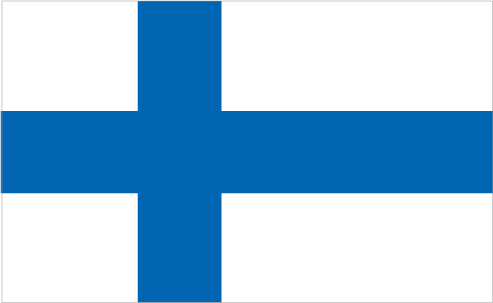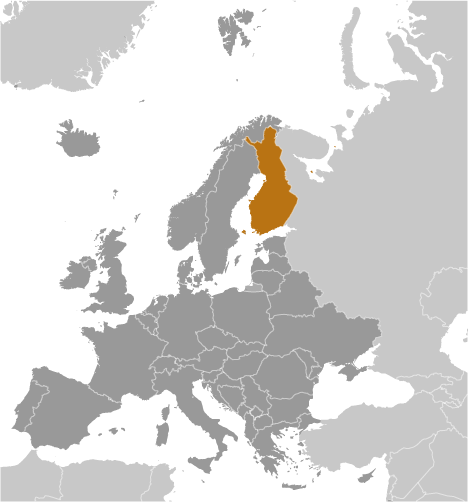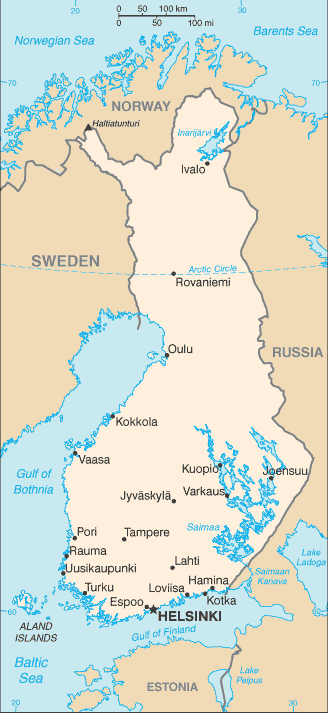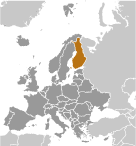
|
|
Advertisements:
EconomyEconomy - overview
Finland has a highly industrialized, largely free-market economy with per capita output roughly that of Austria, Belgium, the Netherlands, and Sweden. Trade is important with exports accounting for over one third of GDP in recent years. Finland is strongly competitive in manufacturing - principally the wood, metals, engineering, telecommunications, and electronics industries. Finland excels in high-tech exports such as mobile phones. Except for timber and several minerals, Finland depends on imports of raw materials, energy, and some components for manufactured goods. Because of the climate, agricultural development is limited to maintaining self-sufficiency in basic products. Forestry, an important export earner, provides a secondary occupation for the rural population. Finland had been one of the best performing economies within the EU in recent years and its banks and financial markets avoided the worst of global financial crisis. However, the world slowdown hit exports and domestic demand hard in 2009, with Finland experiencing one of the deepest contractions in the euro zone. A recovery of exports, domestic trade, and household consumption stimulated economic growth in 2010. The recession left a deep mark on general government finances and the debt ratio, turning previously strong budget surpluses into deficits. In addition to marginal growth prospects, general government finances will remain in deficit during the next few years. The great challenge of economic policy will be to mitigate a possible recession in 2012 in which measures supporting growth will be combined with general government adjustment measures. Longer-term, Finland must address a rapidly aging population and decreasing productivity that threaten competitiveness, fiscal sustainability, and economic growth. Gdp (purchasing power parity) World Ranking: 55
$198.2 billion (2011 est.)
$192.7 billion (2010 est.) $185.8 billion (2009 est.) Note Data are in 2011 US dollars Gdp (official exchange rate)
$266.6 billion (2011 est.)
Gdp - real growth rate World Ranking: 125
2.9% (2011 est.)
3.7% (2010 est.) -8.4% (2009 est.) Gdp - per capita (ppp) World Ranking: 32
$36,700 (2011 est.)
$35,900 (2010 est.) $34,700 (2009 est.) Note Data are in 2011 US dollars Gdp - composition by sector
Agriculture 3%
Industry 29.2% Services 67.8% (2011 est.) Labor force World Ranking: 107
2.682 million (2011 est.)
Labor force - by occupation
Agriculture and forestry 4.4%
Industry 15.5% Construction 7.1% Commerce 21.3% Finance, insurance, and business services 13.3% Transport and communications 9.9% Public services 28.5% (2011) Unemployment rate World Ranking: 92
7.8% (2011 est.)
8.4% (2010 est.) Population below poverty line
NA%
Household income or consumption by percentage share
Lowest 10% 3.6%
Highest 10% 24.7% (2007) Distribution of family income - gini index World Ranking: 126
26.8 (2008)
25.6 (1991) Investment (gross fixed) World Ranking: 107
19.2% of GDP (2011 est.)
Budget
Revenues $136.2 billion
Expenditures $137.6 billion Note Central Government Budget (2011 est.) Taxes and other revenues World Ranking: 19
51.1% of GDP (2011 est.)
Budget surplus (+) or deficit (-) World Ranking: 52
-0.5% of GDP (2011 est.)
Public debt World Ranking: 59
48.6% of GDP (2011 est.)
48.4% of GDP (2010 est.) Note Data cover general government debt, and includes debt instruments issued (or owned) by government entities other than the treasury; the data include treasury debt held by foreign entities; the data include debt issued by subnational entities, as well as intra-governmental debt; intra-governmental debt consists of treasury borrowings from surpluses in the social funds, such as for retirement, medical care, and unemployment; debt instruments for the social funds are not sold at public auctions Inflation rate (consumer prices) World Ranking: 68
3.3% (2011 est.)
1.7% (2010 est.) Central bank discount rate World Ranking: 115
1.75% (31 December 2011)
1.75% (31 December 2010) Note This is the European Central Bank's rate on the marginal lending facility, which offers overnight credit to banks in the euro area Commercial bank prime lending rate World Ranking: 180
2.68% (31 December 2011 est.)
2.267% (31 December 2010 est.) Stock of narrow money World Ranking: 31
$115.5 billion (31 December 2011 est.) $112.9 billion (31 December 2010 est.) Note See entry for the European Union for money supply in the euro area; the European Central Bank (ECB) controls monetary policy for the 17 members of the Economic and Monetary Union (EMU); individual members of the EMU do not control the quantity of money circulating within their own borders Stock of broad money World Ranking: 42
$198.9 billion (31 December 2011 est.) $172.8 billion (31 December 2010 est.) Stock of domestic credit World Ranking: 38
$251.2 billion (31 December 2011 est.) $242.5 billion (31 December 2010 est.) Market value of publicly traded shares World Ranking: 40
$143.1 billion (31 December 2011) $118.2 billion (31 December 2010) $91.02 billion (31 December 2009) Agriculture - products
Barley, wheat, sugar beets, potatoes; dairy cattle; fish Industries
Metals and metal products, electronics, machinery and scientific instruments, shipbuilding, pulp and paper, foodstuffs, chemicals, textiles, clothing Industrial production growth rate World Ranking: 127
1.5% (2011 est.)
Electricity - production World Ranking: 38
67.94 billion kWh (2009 est.)
Electricity - consumption World Ranking: 36
83.09 billion kWh (2008 est.)
Electricity - exports
3.375 billion kWh (2009 est.)
Electricity - imports
12.09 billion kWh (2009 est.)
Oil - production World Ranking: 90
8,718 bbl/day (2010 est.)
Oil - consumption World Ranking: 54
217,400 bbl/day (2010 est.)
Oil - exports World Ranking: 59
133,600 bbl/day (2009 est.)
Oil - imports World Ranking: 32
318,100 bbl/day (2009 est.)
Oil - proved reserves World Ranking: 131
0 bbl (1 January 2011 est.)
Natural gas - production World Ranking: 181
0 cu m (2010 est.)
Natural gas - consumption World Ranking: 62
4.782 billion cu m (2010 est.)
Natural gas - exports World Ranking: 98
0 cu m (2010 est.)
Natural gas - imports World Ranking: 34
4.782 billion cu m (2010 est.)
Natural gas - proved reserves World Ranking: 177
0 cu m (1 January 2011 est.)
Current account balance World Ranking: 131
-$1.394 billion (2011)
$3.496 billion (2010 est.) Exports World Ranking: 49
$78.8 billion (2011 est.)
$69.63 billion (2010 est.) Exports - commodities
Electrical and optical equipment, machinery, transport equipment, paper and pulp, chemicals, basic metals; timber Exports - partners
Sweden 12.1%, Germany 10.2%, Russia 9.5%, Netherlands 6.9%, UK 5.3%, US 5.1%, China 4.8% (2011) Imports World Ranking: 39
$80.4 billion (2011 est.)
$66.23 billion (2010 est.) Imports - commodities
Foodstuffs, petroleum and petroleum products, chemicals, transport equipment, iron and steel, machinery, computers, electronic industry products, textile yarn and fabrics, grains Imports - partners
Russia 18%, Sweden 14.1%, Germany 13.9%, Netherlands 7.8%, China 4.3% (2011) Reserves of foreign exchange and gold World Ranking: 72
$10.35 billion (31 December 2011 est.) $9.555 billion (31 December 2010 est.) Debt - external World Ranking: 23
$577 billion (31 December 2011) $370.8 billion (30 June 2010)Stock of direct foreign investment - at home World Ranking: 40
$92.85 billion (31 December 2011 est.) $85.8 billion (31 December 2010 est.) Stock of direct foreign investment - abroad World Ranking: 23
$145.6 billion (31 December 2011 est.) $136.8 billion (31 December 2010 est.) Exchange rates
Euros (EUR) per US dollar -
0.7194 (2011 est.) 0.755 (2010 est.) 0.7198 (2009 est.) 0.6827 (2008 est.) 0.7345 (2007 est.) Fiscal year
Calendar year
Comments
Add a new comment: |
Advertisement
Members area
Finland (Helsinki):
 
GPS points from Finland (Helsinki)
|
||||||||

 Finland was a province and then a grand duchy under Sweden from the 12th to the 19th centuries, and an autonomous grand duchy of Russia after 1809. It won its complete independence in 1917. During World War II, it was able to successfully defend its freedom and resist invasions by the Soviet Union - albeit with some loss of territory. In the subsequent half century, the Finns made a remarkable transformation from a farm/forest economy to a diversified modern industrial economy; per capita income is now among the highest in Western Europe. A member of the European Union since 1995, Finland was the only Nordic state to join the euro system at its initiation in January 1999. In the 21st century, the key features of Finland's modern welfare state are a high standard of education, equality promotion, and national social security system - currently challenged by an aging population and the fluctuations of an export-driven economy.
Finland was a province and then a grand duchy under Sweden from the 12th to the 19th centuries, and an autonomous grand duchy of Russia after 1809. It won its complete independence in 1917. During World War II, it was able to successfully defend its freedom and resist invasions by the Soviet Union - albeit with some loss of territory. In the subsequent half century, the Finns made a remarkable transformation from a farm/forest economy to a diversified modern industrial economy; per capita income is now among the highest in Western Europe. A member of the European Union since 1995, Finland was the only Nordic state to join the euro system at its initiation in January 1999. In the 21st century, the key features of Finland's modern welfare state are a high standard of education, equality promotion, and national social security system - currently challenged by an aging population and the fluctuations of an export-driven economy.